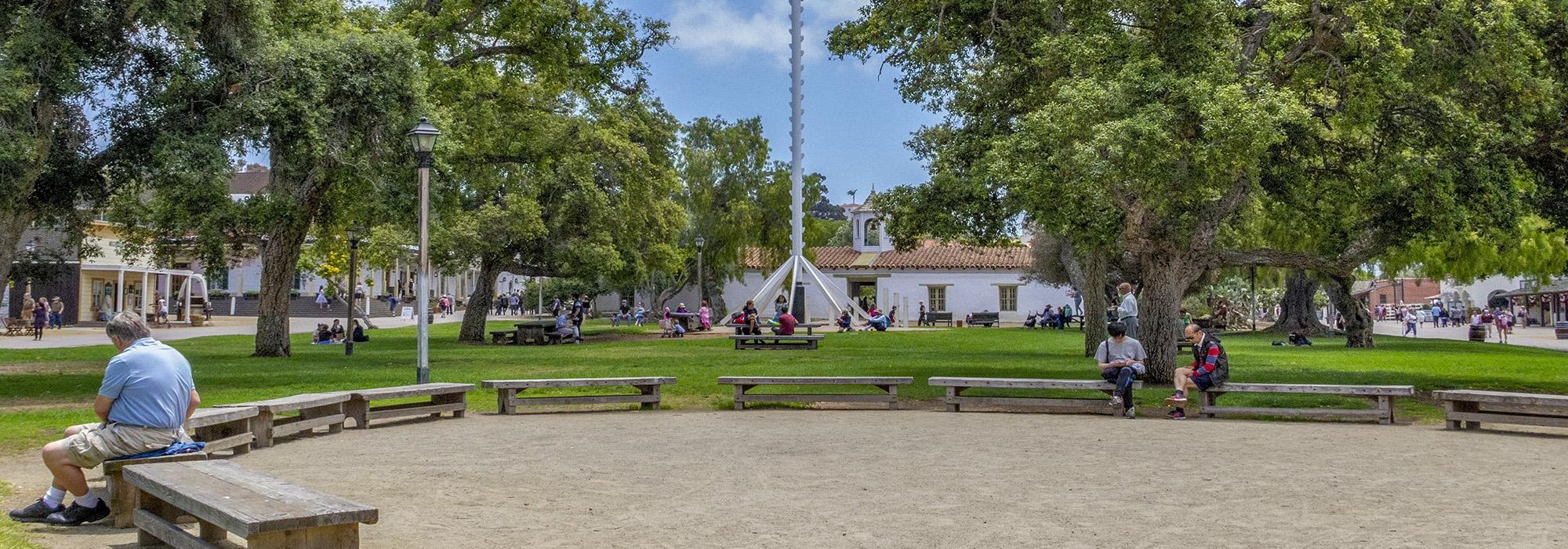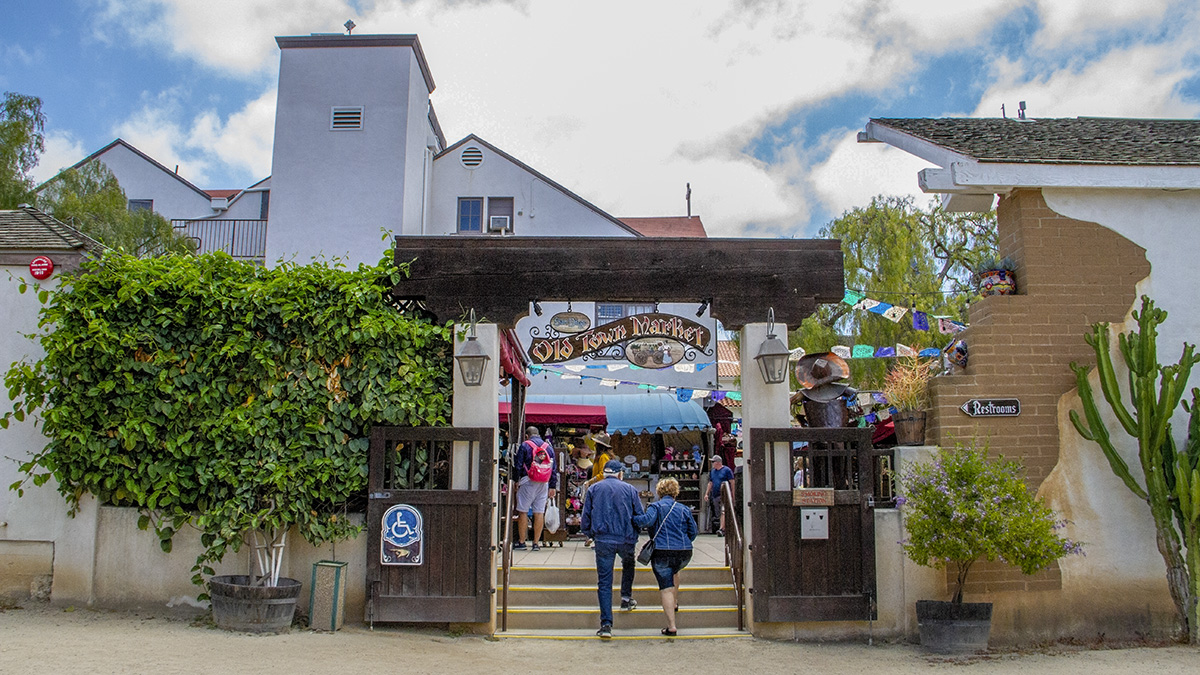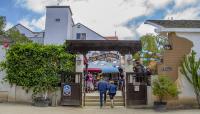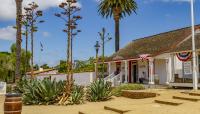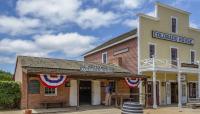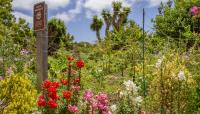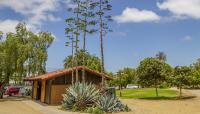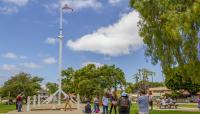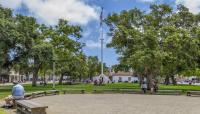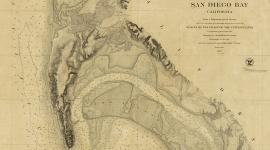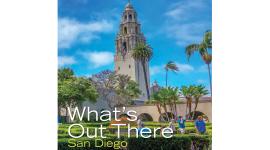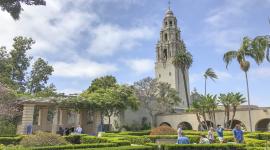Landscape Information
San Diego traces its origins to El Presidio Reál, the Spanish garrison established atop Presidio Hill in 1769. Following California’s admittance to the Union in 1850, San Diego was incorporated as a city, but its distance from the San Diego Bay prevented any major growth. In 1867 the real estate developer Alonzo Horton established the new town of San Diego along the coast, and the old settlement was abandoned. As the suburbs of San Diego began to envelop the original settlement in the early twentieth century, renewed public interest in the early town led to its restoration and reconstruction. In 1968 Old Town San Diego was designated a state historic park.
Located four miles northwest of downtown San Diego, the seventeen-acre site is accessed by pedestrian-only earthen streets oriented around the Plaza de Las Armas. Also called Washington Square, the plaza is a level, one-acre, rectangular lawn shaded by eucalyptus trees. Reflecting the town’s different stages of Mexican and American occupation, the streets are lined by 22 historic and reconstructed adobe, brick, and wood-frame structures, some dating back to the 1820s. Southeast of the plaza is the prominent Casa de Estudillo, the setting of Helen Hunt Jackson’s nineteenth-century romance novel Ramona. Building on the novel’s popularity, sugar magnate John Spreckles commissioned local architect Hazel Wood Waterman to restore the building and design the formal courtyard gardens. Towering above the tree line at the southern end of the plaza is a wooden ship mast. Serving as a flagpole, the mast commemorates the first American flag raised here in 1848. Restored by Waterman in 1909, the Casa de Estudillo was listed in the National Register of Historic Places in 1970, soon followed by the Old Town San Diego State Historic Park, listed as an historic district in 1971.



